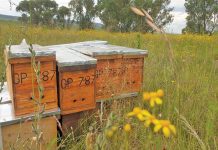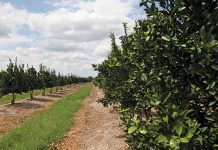“To understand the role grapevine nutrition plays in obtaining higher yields and optimum grape quality, we need ongoing research into table grape fertilisation,” said PJ Raath of Stellenbosch University’s Department of Viticulture and Oenology, at the recent International Table Grape Symposium in Somerset West, Western Cape. “Available fertilisation guidelines are based on experimental work on nutrient consumption done on wine grapes, with production levels and vegetative growth generally lower than table grapes.” The table grape guide Without guidelines specifically for table grapes, producers were prone to use higher-than-recommended levels of fertiliser, particularly on sandy soil, Raath explains. Two studies were undertaken to adapt fertilisation approaches for table grapes. One found maintenance fertilisation with nitrogen and potassium necessary to keep production levels high in the Hex River region’s sandy soils.
The other found soils with different textures and organic content need significantly different levels of nitrogen fertilisation to achieve optimal production and quality. Sandy soil needs twice as much as loamy sand soils, says Raath. Loamy sand soil needs no maintenance fertilisation before potassium levels have decreased to 50mg/kg, but irrespective of carbon content, sandy soils need annual applications of 60kg/ha to 80kg/ha. Higher applications could have a negative impact on grape quality. Increasingly, SA table grape producers apply fertiliser through irrigation systems. Research compared open hydroponic principles (OHP), where fertiliser is supplied daily, and fertigation, where fertiliser is applied either weekly or three times a year. OHP provides no significant production or quality benefit over fertigation, and after three seasons the soil directly under the drippers was acidified. S ustainable farming practices are becoming more popular, increasing the use of organic nutrient sources. These can be in the form of enriched organic material (EOM), compost or manure.
Recent research found that EOM should be handled on the same principles as mineral fertilisers in terms of nitrogen-releasing capacity. The levels of nitrogen released by organic materials such as sewage compost and raw chicken manure don’t meet the vines’ requirements for optimal production and quality. In the future With this information, farmers can establish a table grape programme that considers soil type, soil chemistry, climate, rootstock, cultivar, production levels, irrigation systems and vine vigour. Future research should be directed towards leaf and berry analyses. Reliable and narrow norms for different rootstock and cultivar combinations aren’t available, making foliar analyses less effective. Norms for berry mineral content should also be determined. E-mail PJ Raath at [email protected], call (021) 808 4784 or fax (021) 808 4781. |fw








